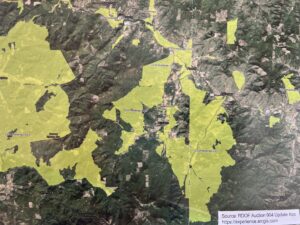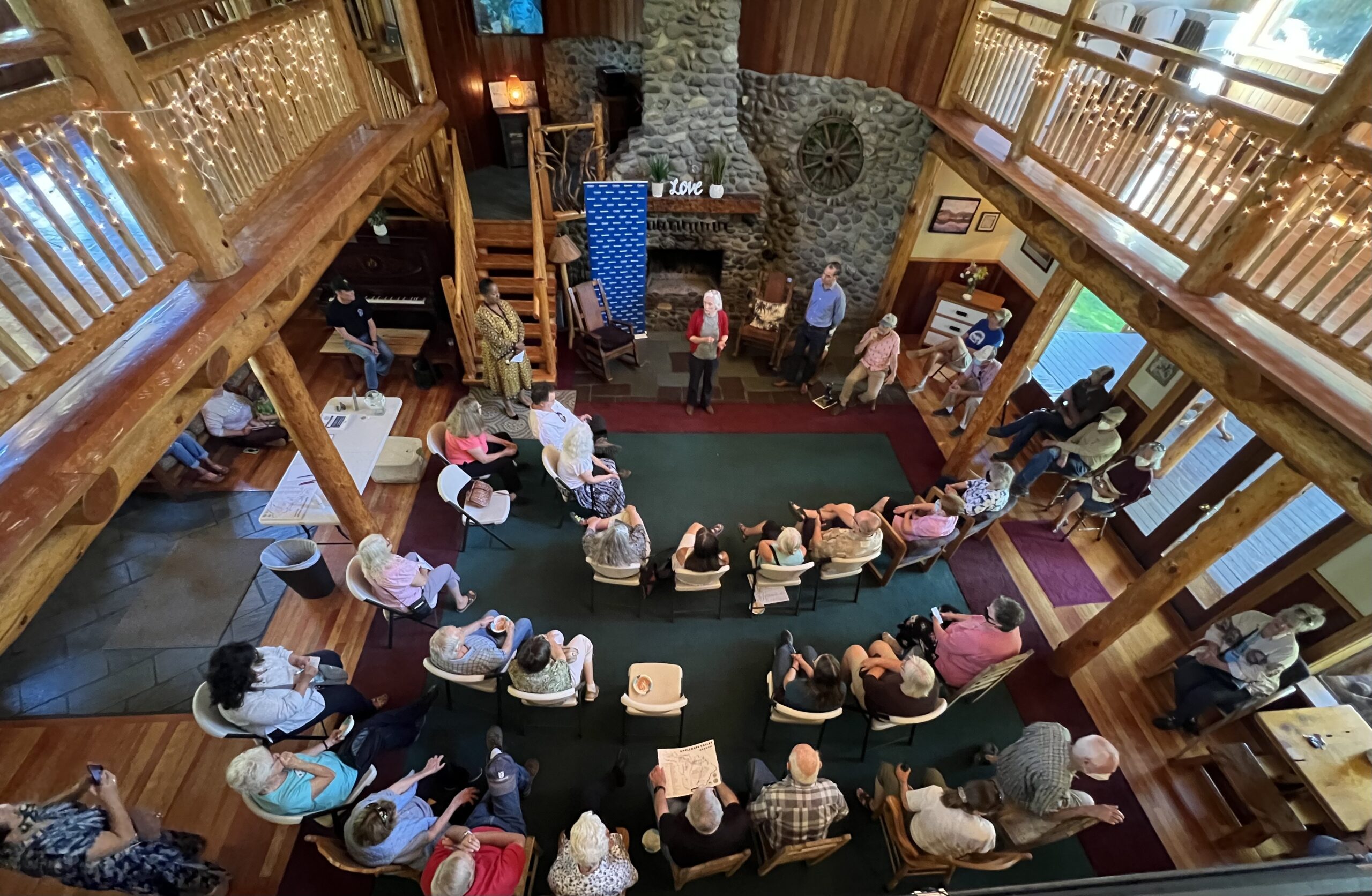If the community meeting with Spectrum Internet felt more like a grilling than a Q&A, it’s because there is a lot at stake.
Last Wednesday, July 20th, Spectrum Internet held an ice cream social at the Applegate River Lodge. The natural, riverside setting was appropriate for the topic at hand: The arrival of more fiber optic Internet to our rural valley.
In 2019, the federal government distributed $65 million nationwide through the Rural Digital Opportunity Fund (RDOF). The purpose was to close the “digital divide” that exists between rural and urban Americans.
Applegate residents came to the Wednesday meeting with hopes for details on the execution of the plan in their area and with the question: Will I get Internet, or not? Many have been seeing Spectrum trucks on the road and were curious about the provider’s activities.
Oregon legislature representative, Pam Marsh, was in attendance, along with Seth Kaplan of Greater Applegate (AGA). Both are big supporters of rural Internet access, and want the community to stay informed. Spectrum representatives were on hand, too.
The lodge’s main room was full and there was a lot of energy–and tension–in the air. The Spectrum representatives were not far into their presentation before the audience started launching questions. It didn’t take long to understand the urgency. Rural residents are not merely frustrated because Ted Lasso freezes up in the middle of an episode. They are frustrated because their safety is at stake.
It’s not just about Netflix
“This is a very important issue,” says Priscilla Weaver after the meeting was finished. Weaver lives six miles up Little Applegate Road. She has been involved with rural communication issues since 2014, when she began to advocate for better landline service. “If people have fast Internet, they don’t have to be dependent on landlines,” she explains.
Last fall, her neighbor had respiratory arrest and had to be airlifted to the hospital. She explained that the “ancient” landlines went down 24-hours later. If the lines had failed a day earlier, her neighbor would have died. “Without good Internet, no cell service, and unreliable landlines, there is no way to call 911.”
Weaver now uses Starlink’s satellite service, which she describes as “fabulous”. Still, she is excited at the prospect of having more options with the addition of Spectrum’s fiber optic. She is relieved to not have to rely on the aging landlines.
Why not Starlink for everyone?
Elon Musk’s Starlink satellite service has solved the problem of rural Internet for many, but not everyone. For starters, there is a long waiting-list for the service. Also, many people cannot afford the pricey satellite equipment, and $100+ monthly subscription fee. Also, Starlink requires a spacious line-of-sight to catch the signal and so doesn’t work well on forested properties.
Nonetheless, Starlink has been so successful in the valley, that it could make it harder for local providers to compete. This worries Jeff Norton, who will be left with no Internet access at all, if local providers go out of business.
Norton lives ten-miles up Thompson Creek Road–just out of reach of the current Internet cable; it stops at the 9-mile marker. His house is in the trees, so Starlink isn’t an option. He has no cell coverage either. He’s lived in the property for 27 years and recalls a time when it didn’t matter much. “Nobody had Internet back then, but these days it’s essential.” Now, he says, he needs it for “everything”.
While he cites the desire for entertainment to get him through dark and lonely winters, the biggest issue for him is safety: “I live alone. What if I have an emergency? How do I cry for help?”
Few specifics, lots of hope

Spectrum’s coverage maps are not detailed yet. Danielle Wade, the area VP of Field Operations, reiterated that the project is “still in the design phase.” She said that the work that begin this fall and would add an additional 2000 houses to the network by the project’s completion at the end of 2023.
Forty-percent of people in rural areas don’t even have minimal broadband. During the pandemic they were deprived of access to work opportunities, schooling, religious services and community activities.
In the neighborhood listening sessions conducted over the past year by A Greater Applegate, the top two concerns of local residents were fire safety and Internet. AGA is committed to advocating for equitable Internet access, and to keeping the community informed. They have a small fund to help people acquire equipment and start up their service.
At the meeting, Spectrum provided hard copy maps of the upcoming coverage areas, but the maps were not detailed. Residents repeatedly asked the Spectrum representatives if their properties would be included in the expansion. Danielle Wade, the area VP of Field Operations, kept reiterating that the project is still in the design phase. “We can’t answer specific address questions right here now.” She said that the work that begin this fall and would add an additional 2000 houses to the network by the project’s completion at the end of 2023. “Our goal is to get to as many people as possible,” she added.
“I didn’t get what I hoped to hear, which was that everyone that’s on the grid will be connected.” said Horner. “I’m on pin-and-needles.”
“This is just the start,” Marsh assured the residents. She explained that additional rounds of funding were coming in the future. These would address what she saw as three parts of the issue: to make sure residents have Internet, can afford it, and know how to use it.
“We’re not going to stop until everyone has Internet,” she said.
“I’m very hopeful about this,” says Weaver. “I think this is great news.”



I didn’t hear a mention of the monthly cost only being for one year, as a promotional deal. How much is it going up after that? I don’t think I can get it anyway, I’m up by Jeff Norton. I just got my Starlink kit (no wait), but I have lots of trees too so don’t know how that’s going to work.